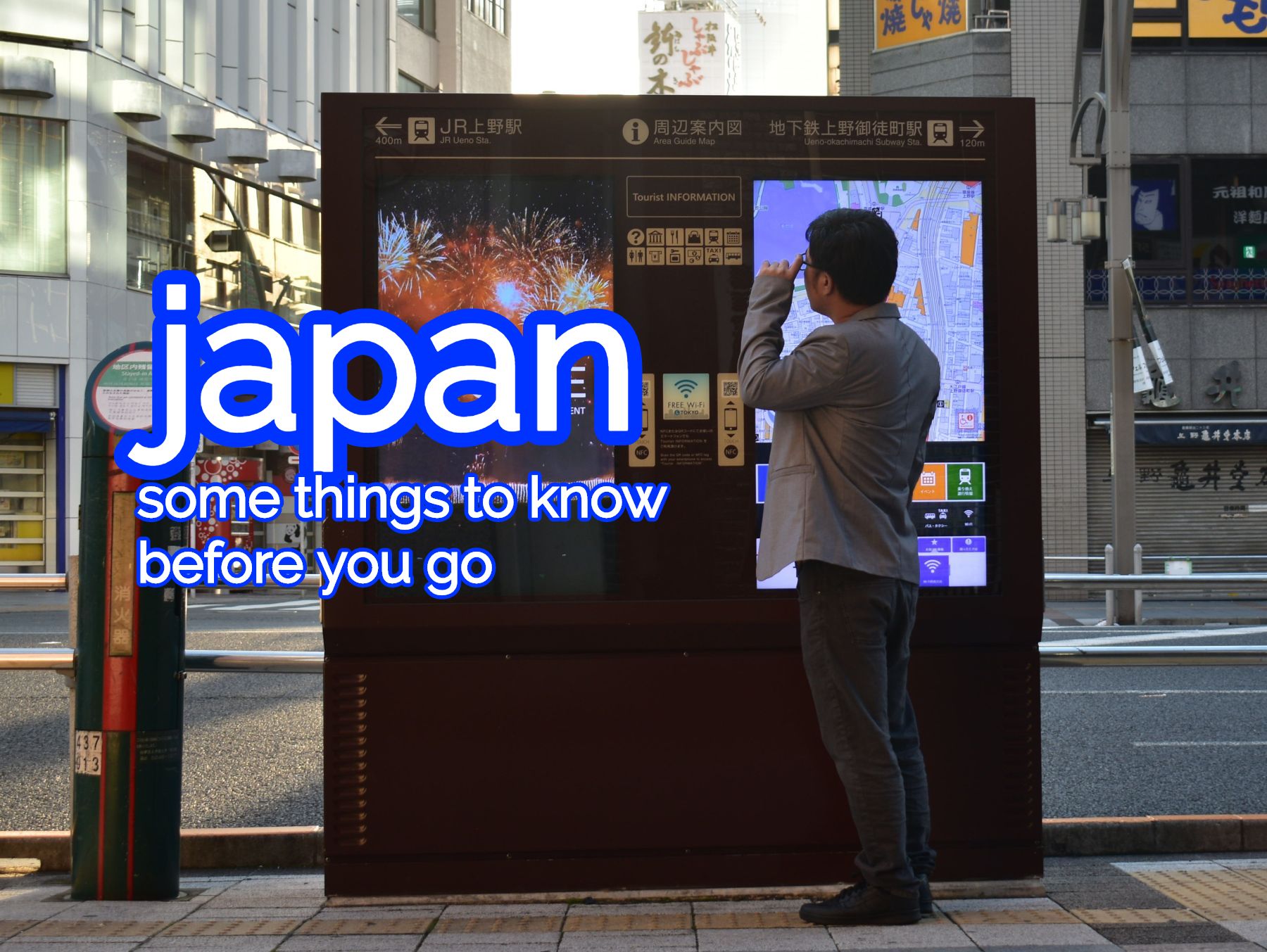Credits: This article has been made possible with the help of my dear friend, Rosario Ocho, who occasionally goes on business trips in Tokyo.
When I went to Japan for the first time and had a firsthand experience of its capital Tokyo, it wasn’t as smooth as I imagined it to be, particularly during the first couple of days. It was overwhelming not just because I was a first timer, but also because I was traveling alone. I did some pretty good research prior to my travel (glad I did) but still, there were things I wished I knew before traveling to Japan. It could have been a lot easier for me to get around and do the things that I wanted to do.
Are you visiting Japan soon? If yes, chances are that you are searching for some travel tips that can help make your upcoming trip more convenient and a lot of fun. You have come to the right page! I have compiled below a collection of tips that my generous and dear friend, Rosario, gave to me for Meanttogo readers. This will surely come in handy once you set foot in Japan, more so in the vast metropolitan of Tokyo.
So, without further ado, here are some things to know before going to Japan.
CONTENT AT A GLANCE
1. On why avoid the “golden week”
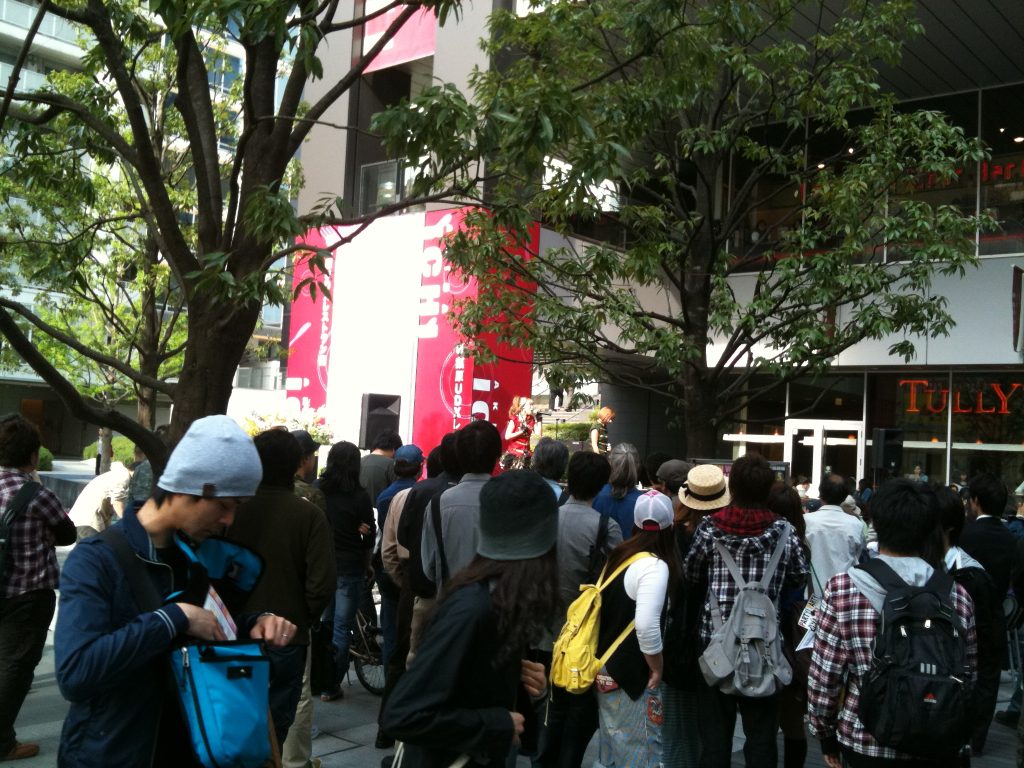
Holidays – and more specifically the “Golden Week” – can be too crowded. Expect shrines and temples and themed parks such as the Disneyland to be jam-packed with tourists – local and foreign alike. If you do not like to be stuck in long lines or endure the long search for a vacant accommodation (lucky if you find one), then you might want to consider avoiding the “Golden Week,” which happens from the last week of April until first week of May.
2. Be mindful of the weather/ season (and wear appropriate attire)
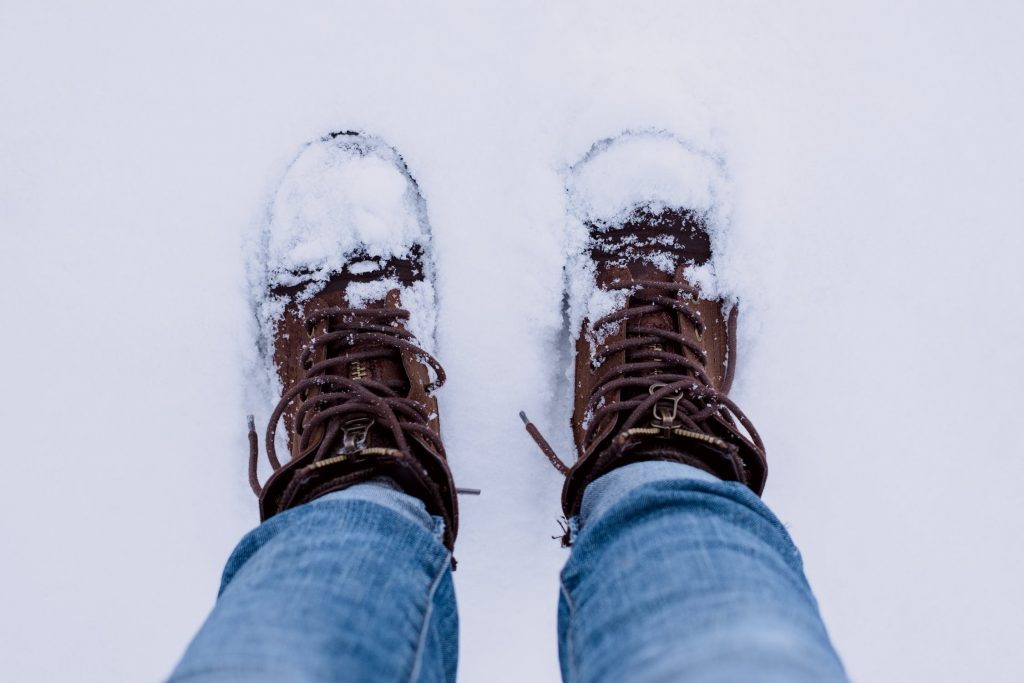
Having a summer outfit in the middle of winter isn’t just peculiar to the people around you, but it could also ruin your day. A 10-degree celsuis is damn cold, but much more when the winter wind blows. So make sure you wear appropriately for the season.
Same goes to the summer season. The convention in Japan is that shorts/skirts are worn by girls/women along with stockings. For guys/men, sleeveless shirts are not commonly worn in public, unless you are in (or going to) a beach. Of course, wearing attires that are divergent to the conventional ones does not merit penalties of law, but surely, it’s enough for you to become a headturner; albeit in a way that you do not want to.
Remember, to blend into the norms does not only give you a feeling of “I belong” but it is also a gesture of respect. And you can start doing that by simply wearing an attire that is appropriate for the season.
3. Flip flops/slippers are rarely worn in public

In Japan, flip flops/slippers are commonly worn only at home. It is seldom that you see people wearing them outside. If you see one, chances are that person is a foreign tourist. As I said, wearing this type of footwear outside does not run you into trouble with the local laws; the Japanese people are generally considerate, so no worries. But then again, it boils down to blending with the norm as a gesture of respect.
4. Wear sneakers instead
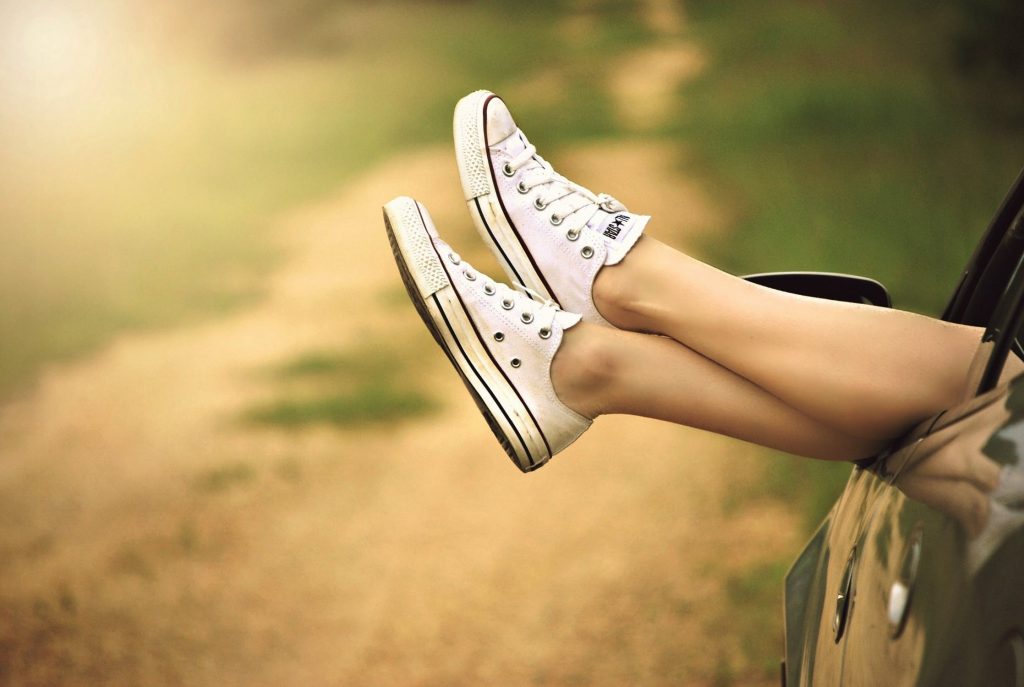
Speaking of footwear, Rosario advises “to wear rubber shoes (sneakers) in public instead” . “Eventhough the trains are everywhere, getting around in Japan would entail a lot of walking. So, shoes with high heels isn’t recommended” she said.
During cold weather and tsuyu (rainy days – after spring and opening of summer), avoid wearing suede shoes as they easily get damp, and it is really cold to get around when your shoes is wet
5. Go north if you want to see snow
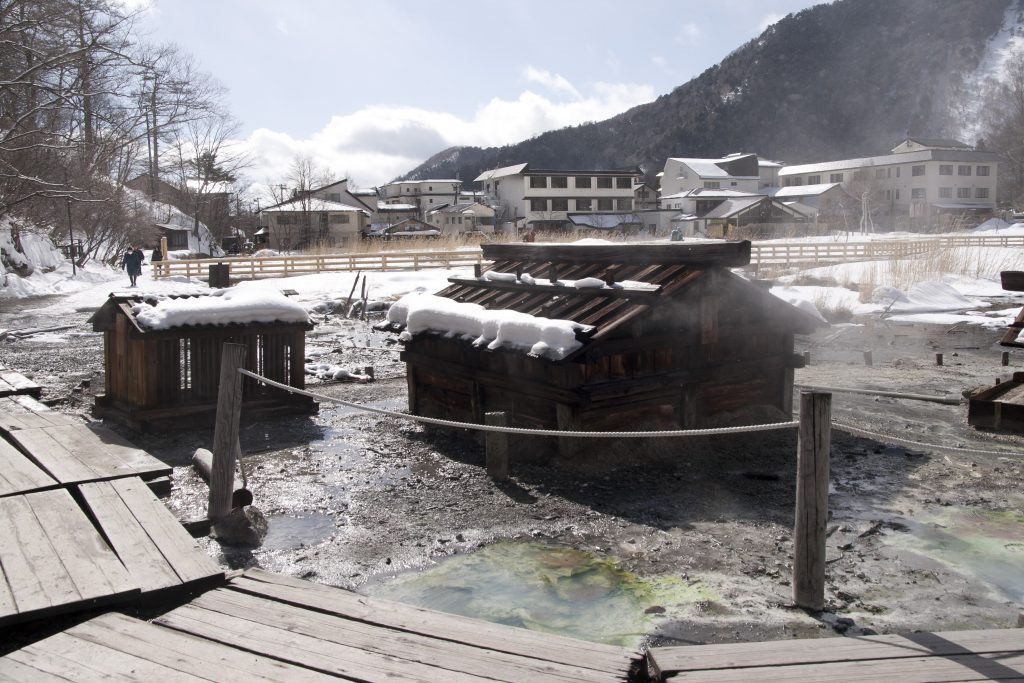
If you are traveling to Japan in winter to experience/see snow, schedule a visit to the North or places North of Tokyo. Though the metropolitan’s temperature drops to almost unbearable low during winter, it is rare to see snow in the area. There is a very slim chance that you see snow in Tokyo and the nearby places in your time of visit.
6. When using the street
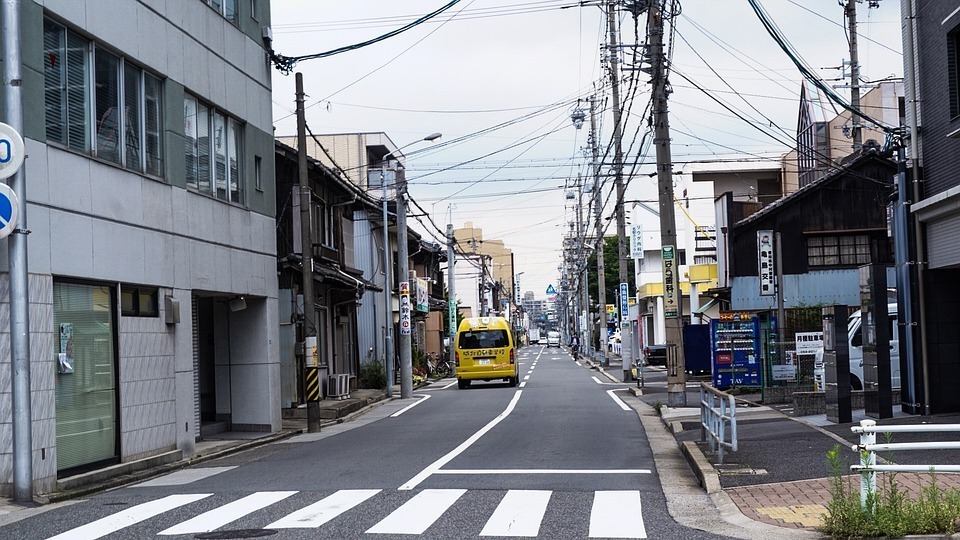
Japan is one of the countries using right-hand-drive wheels on the left lane. Those who are visiting Japan who intend to drive on their own must put in mind to always go left.
When you walk the street, walk on the right side; when crossing the street look to your left (if you are about to bump into someone, the practice is to go left to avoid it).
7. When using the escalator
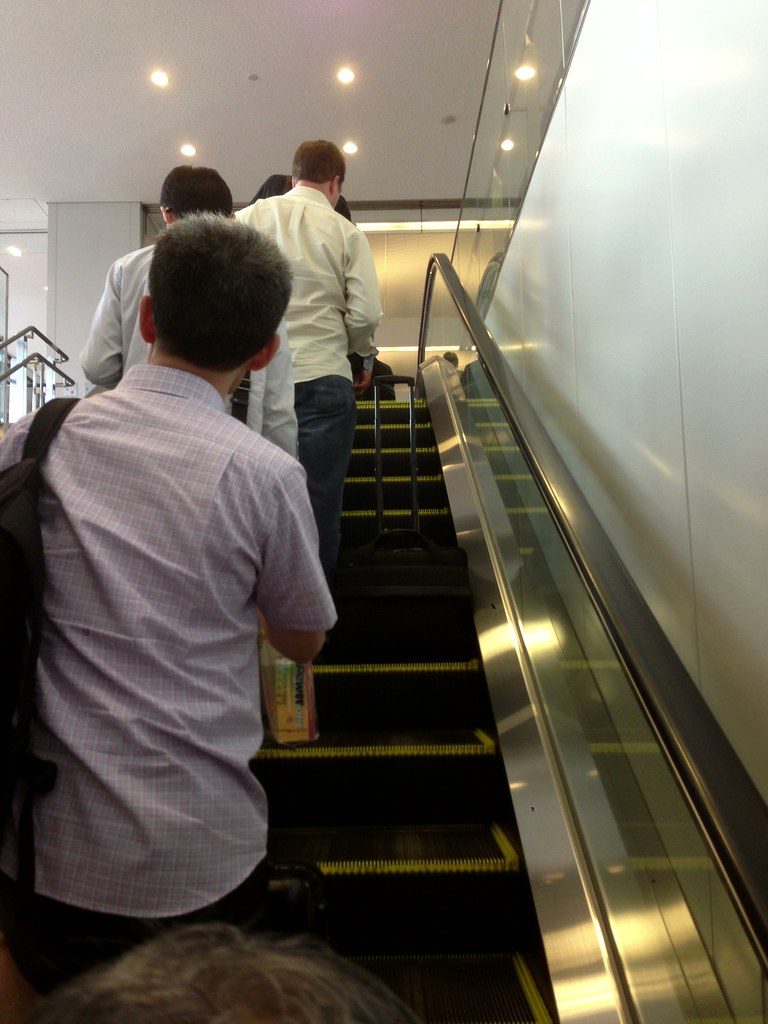
When using escalators, stay on the left side. This allows the right side to remain open for those who are in a hurry and intend to move along . In other words, when you want climb up on an escalator, use the right side of it.
8. Trains are the most preferred mode of transportation
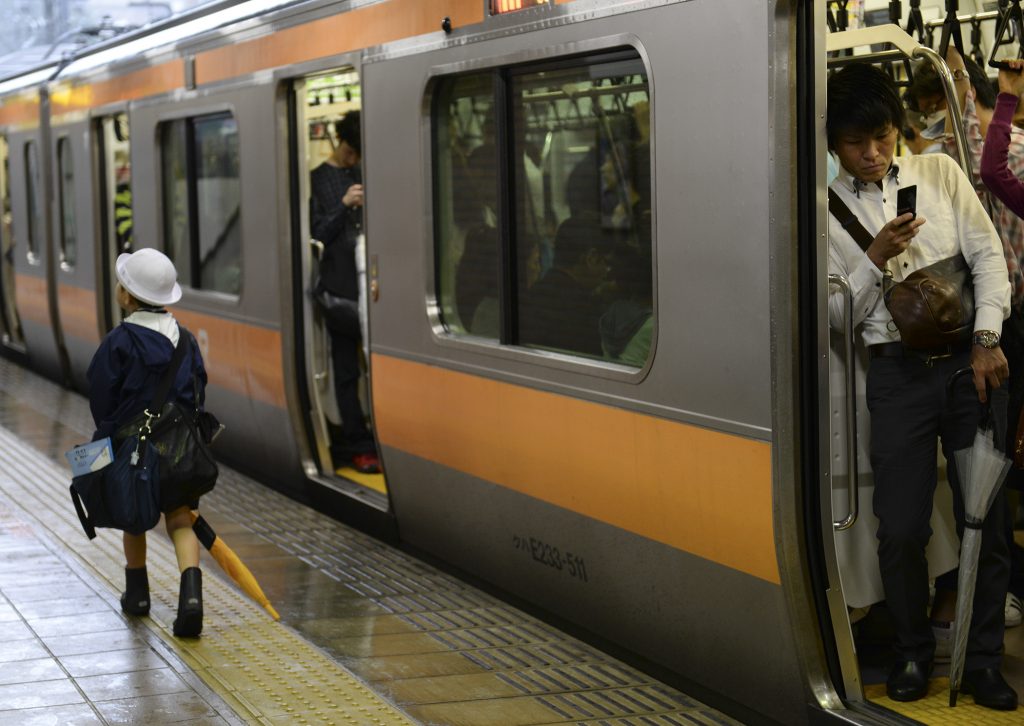
Japan has the most sophisticated train network. It is efficient and economical at the same time. And they are everywhere. But despite that, there are still a number of important things to note to make your ride more convenient or at least to make you better prepared for your train experience.
Be mindful of the following:
- Even if you’re a lady and there are dedicated cars (train compartments ) for you, they can still be crowded at times. Trains are usually congested during rush hours. Do not complain if it’s like that. If you want to go to your destination on time, get on board that crowded train, be more patient and be prepared for awkward positions (like you get pressed onto the window or you smell unpleasant odors) .
- If there are still spaces, don’t hesitate to go inside and grab a sling (safety handle grip/ring) and stay away from doors – those are the best spots inside the train during rush hours.
- If you’re standing near the door and the train stops at a station, be willing to go out to give way to the passengers alighting or dropping off. Just get back to the train when those passengers are done.
Then again, you have the option to not ride the train during rush hours if you want to avoid such a scenario. Rush hours usully starts at 7am to 9am, then 5pm to 7pm.
Please note as well that trains do not operate 24/7. They tend to stop operating at around midnight and resume at around 4am at any given day. If you can’t catch the last train, your option would be to ride a taxi back home. And it is way more expensive. So, mind the time always.
9. Temples, shrines, and public parks are the best bet for budget travel
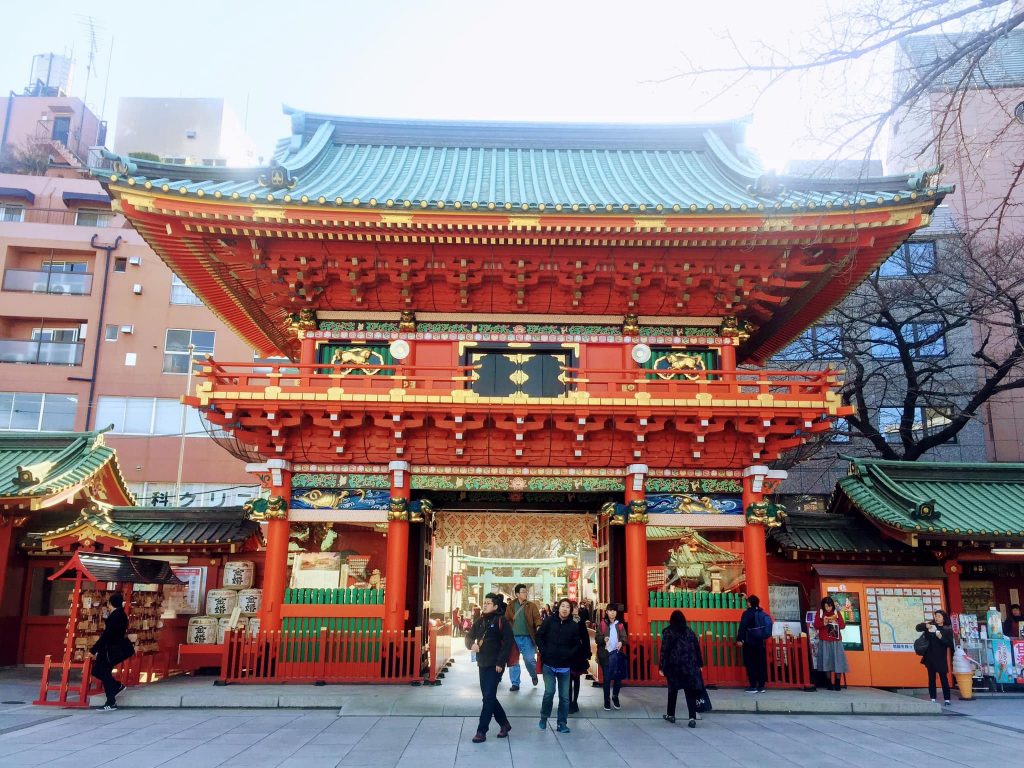
Public parks and shrines are always free of charge. Tokyo, for instance, has the Meiji Shrine and it is the famous of them all. It is so big that it is called a “forest within the city”. It is also the nearest to the station and shopping centers like Harajuku.
There are lots of beautiful shrines and temples in Tokyo that you can visit and enjoy for free.
Speaking of shrines and temples, there is a significant difference between the two. Shrines are visited for celebrations and happy occasions. The latter is visited on occasions of mourning such as a funeral. So, if you are sharing about your fun travel experience to your Japanese friends, talk about your visit to shrines, not your visit to temples.
10. Public parks are everywhere
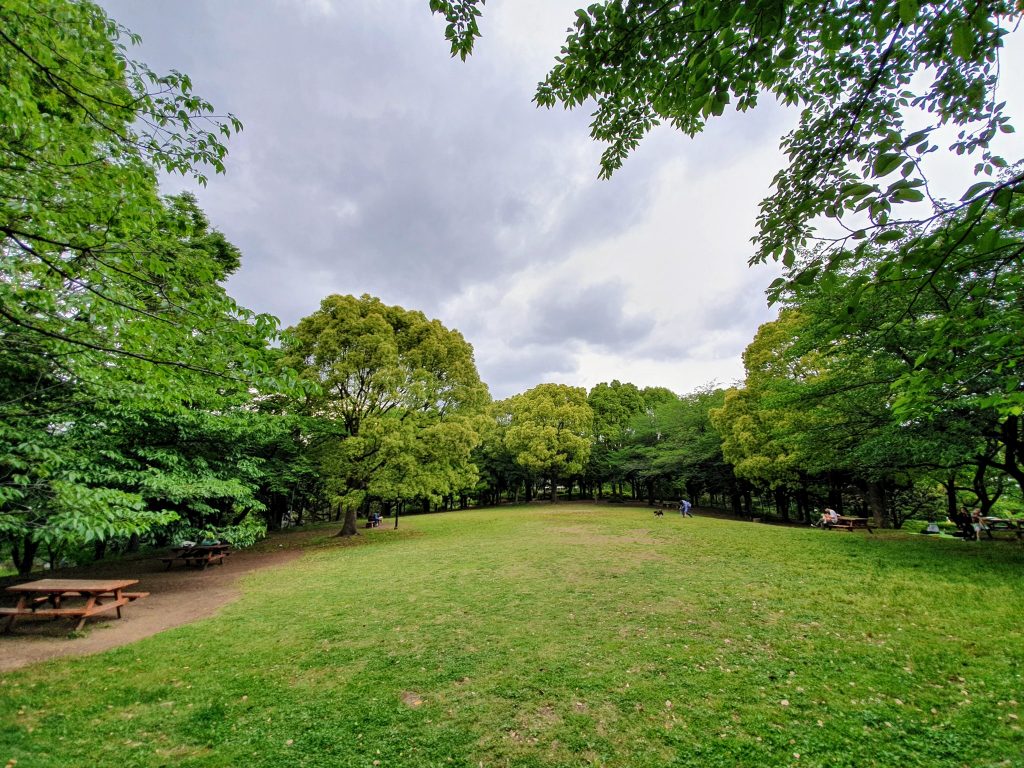
In Tokyo, parks are everywhere and are very accessible – even in the neighborhood you can see one. But of course, it is best to visit the biggest parks. Rosario recommends visiting Ueno Park because “it is one of the biggest and there are shrines and temples in it. It houses a zoo and museums too.” Science Museum and The Museum for Western Arts are some examples you can visit within Ueno Park. Indeed, Ueno Park is all in one.
11. Visit Ameyoko for keepsafe/gift items
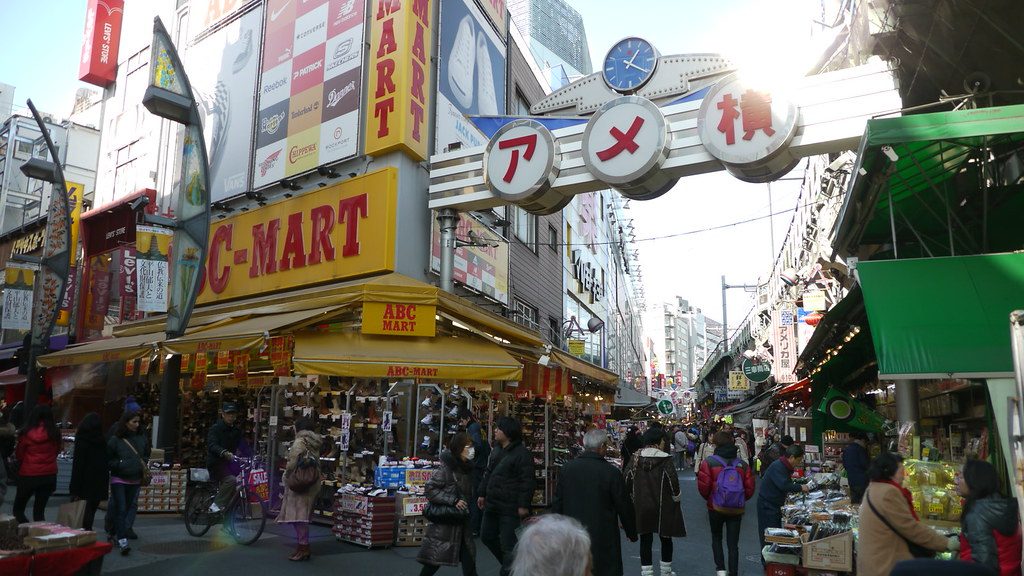
Just across the entrance of Ueno Park, you can visit one of the most popular shopping centers in Tokyo – Ameyoko. You can find good deals in there for gifts to your loved ones back home – from bags, shirts, shoes, sweets, name it! No wonder why there are lots of tourists in the area. And, oh, I should mention that Ameyoko is also popular for stores where you can haggle for more discounts. So, give it a try.
12. On shopping for the cheapest items
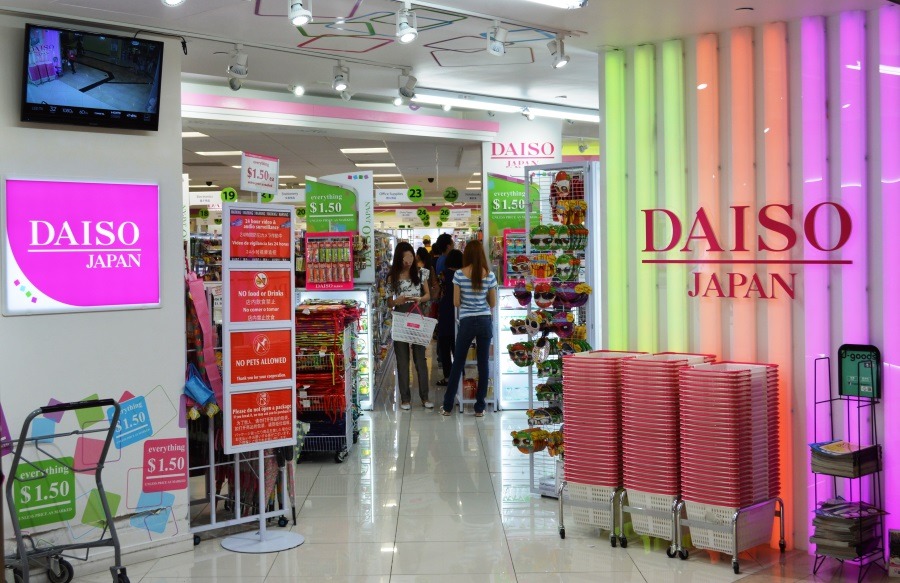
Japan seems to have a standardized pricing for products. In Tokyo, for instance, the price of shoes you buy at any random store in the metro is the same price (for the same item) you see at the airport. If you really want to shop for discounted/cheaper items, go buy at the 100 en shops. They are everywhere. Some popular brands include: Seria, Daiso, CanDo. These stores sell really affordable items but of good quality.
You may also try Don Quijote as they sell affordable items as well (though not considered as 100 en, according to Rosario).
13. On where to eat
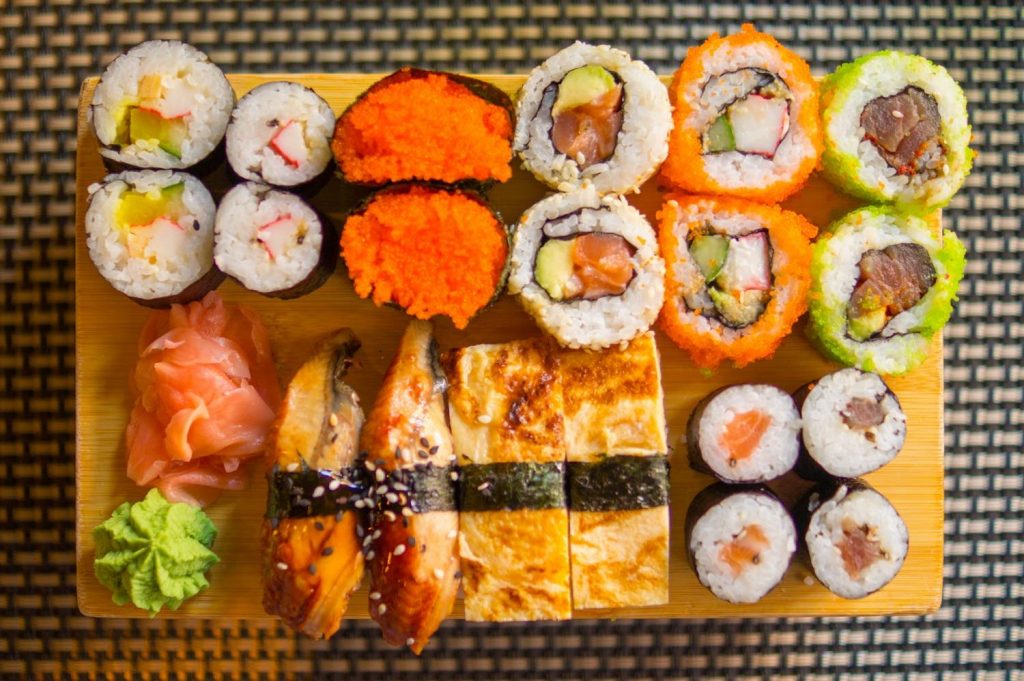
Japan is the go-to place for those who travel for food. In fact, Tokyo is one of the places in the world with the most number of Michelin-rated restaurants. High-end restaurants offer the best dining experience but they tend to be way pricier.
For those who are traveling in Tokyo on a budget, no worries, as there are also a lot of affordable good foods in the metro for you.
Here are your bet for affordable eats:
- Food chain such as McDonald’s and KFC are pretty common in the metro. They serve great selections of menu items. Please note, however, that these stores do not serve rice, so find another store if you want rice meals.
- Speaking of rice meals, your great options are restaurants serving gyudon (beef bowl) such as Sukiya, Yoshinoya, Matsuya.
- For curry, your best bet are places like the Cocoichibanya; they also serve ricebowls. For tempura, they have Tendon Tenya.
Note that the above-mentioned restaurants will make you shell out about 600 en (around USD 6.00) per meal.
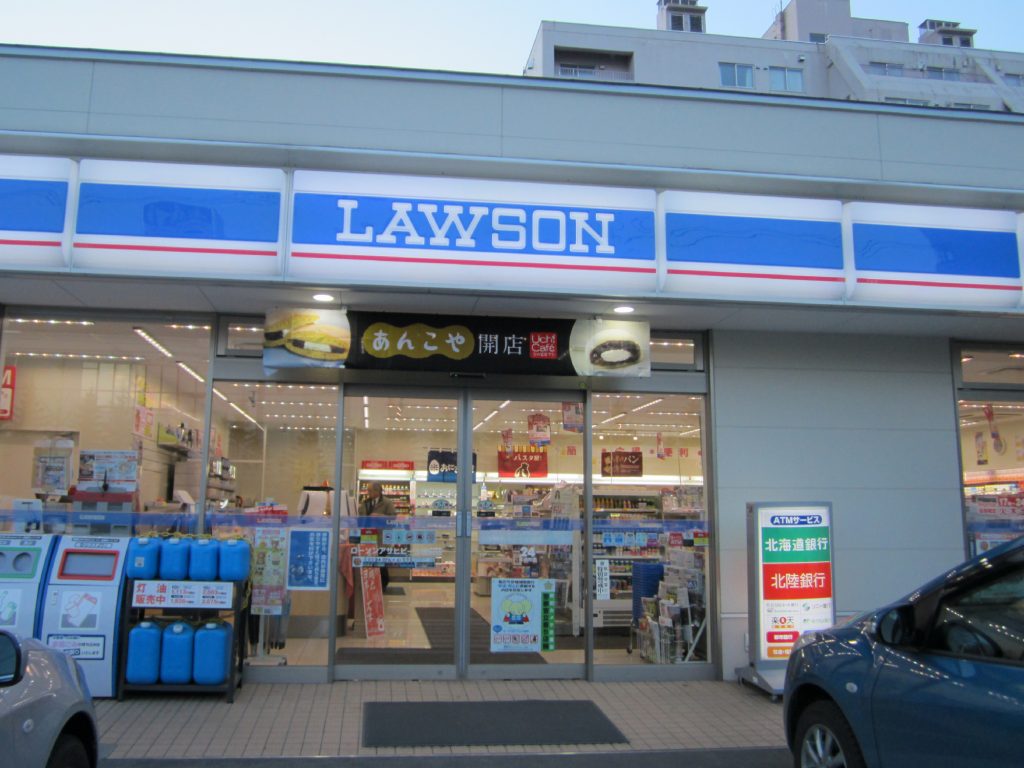
- Convenience stores are where you can find the cheapest, to-go food items. The most popular brands are 7/Eleven, Lawson, and Family Mart. Here, you can get delicious finds such as musubi and ONIGIRI for only about 200 en (USD 2.00
). You can also buy bento, which usually includes a number of different foods in it, at around 300 en (USD 3.00) – half the price of that of fast foods.
Note: When buying at a konbini (convenience store), though the items are always fresh, you can reheat the food at the cashier if you want. They can just then give you chopsticks so you can eat it right away – either at their eat-in areas or outside, at the park, for instance.
If your accommodation allows you to cook, you might want to prepare your food yourself as this tends to be the cheapest of them all.
14. On eating outside
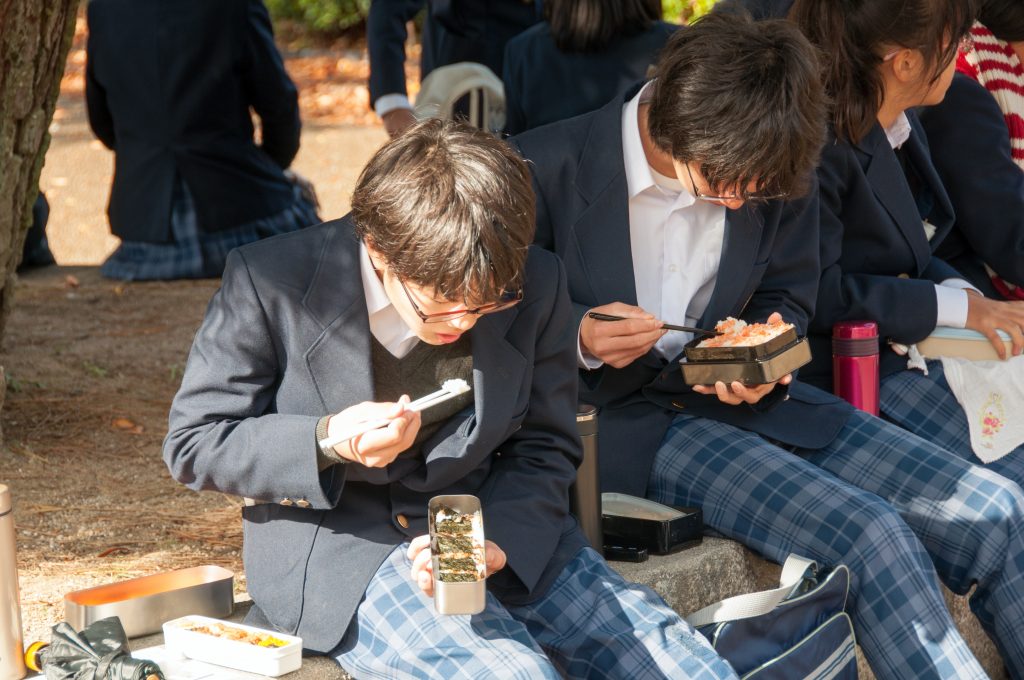
The Japanese don’t mind whenever you eat outside. You can eat in a standing position at a sidewalk or take it to the park, where you can just lay a sheet on the ground and enjoy your meal.
Please note, however, that eating while walking is considered rude. But then again, it does not mean you are violating local laws when you do that. However, anyone is discouraged to do that as a gesture of courtesy to the norms.
When it comes to drinking water, there should also be no problem with that as they are available at parks. Yes, tap water in Japan is drinkable.
Vending machines are also everywhere; you can just buy different kinds of drinks without any difficulty. Hot drinks like coffee are available too.
15. On trash disposals

It is rare you can find a trash bin in the streets of Japan – yes, including the streets of Tokyo. Yet, they are surprisingly clean. The practice is that Japanese people eating outside keep their trash in them. When inside the park, they do not leave their trash anywhere. Parks provide trash bins, but there are also parks where garbage disposal policy requires you to take back your trash as you exit the park.
So, that is it for now. Some things you need to know that may help your first-time visit to Japan more convenient and fun.
This is a work-in-progress article, I’ll sure add more useful info as soon as they are made available to MeantToGo.
To learn more tips for your Japan travel, read my Tokyo Comprehensive Travel Guide + Sample Itinerary.
